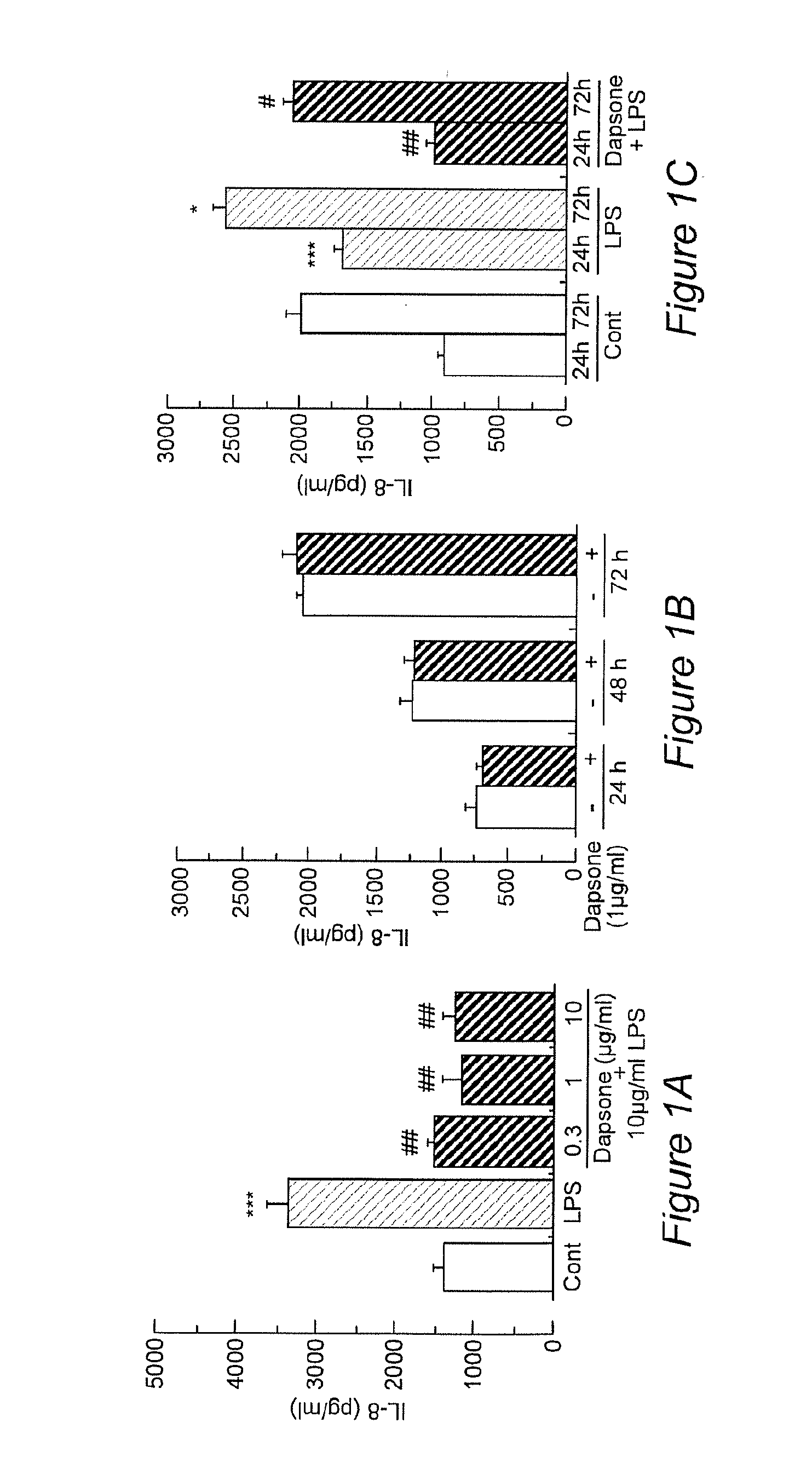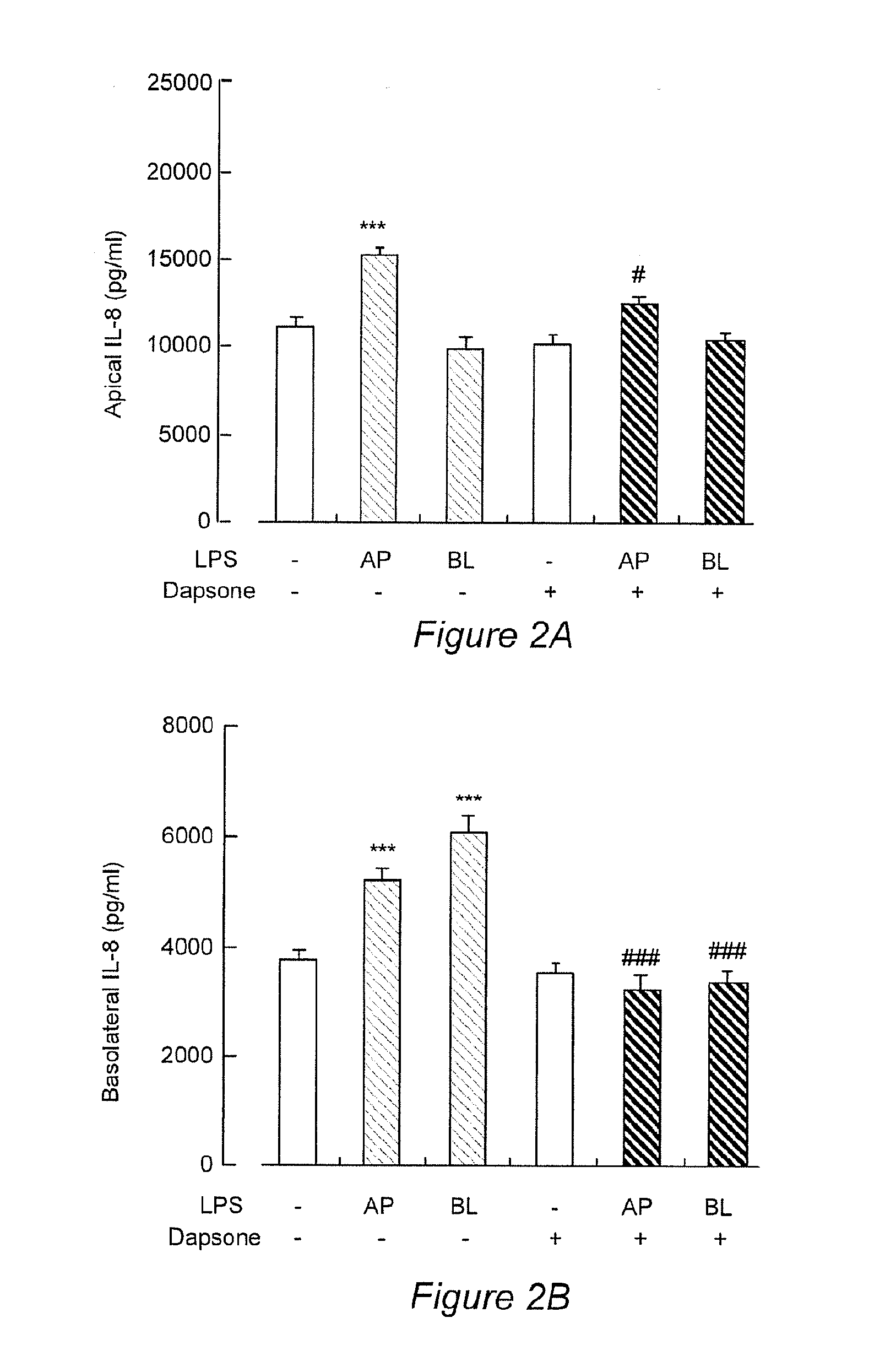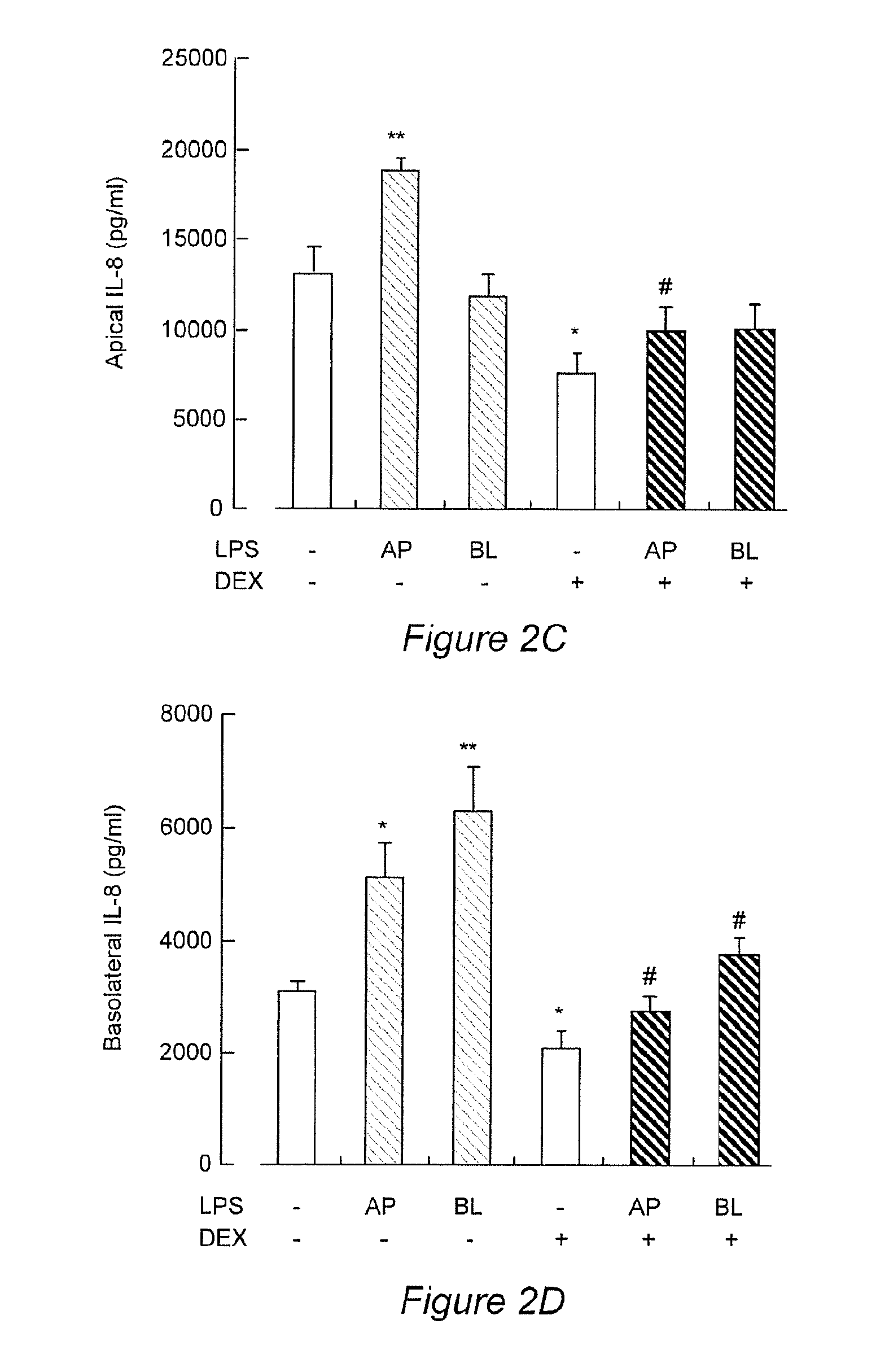Aerosolized Dapsone as a Therapy for Inflammation of the Airway and Abnormal Mucociliary Transport
a technology of airway inflammation and aerosolization, which is applied in the direction of aerosol delivery, spray delivery, drug compositions, etc., can solve the problems of contributing to the rise of antibiotic resistant bacterial strains, and achieve the effects of reducing the accumulation of lps-induced intraepithelial neutrophils, increasing the risk of infection, and reducing the risk of infection
- Summary
- Abstract
- Description
- Claims
- Application Information
AI Technical Summary
Benefits of technology
Problems solved by technology
Method used
Image
Examples
example 1
Dapsone Inhibits IL-8 Secretion from Human Bronchial Epithelial Cells Stimulated with LPS and Resolves Airway Inflammation in the Ferret
Introduction
[0032]The respiratory tract is lined with epithelial cells that separate the internal milieu of the host from the outside world. Airway epithelia are not only a mechanical barrier to external stimuli and microbes but are actively involved in the innate and acquired immune responses and airway inflammation. In response to bacterial invasion, mucociliary clearance is stimulated and inflammatory mediators and cytokines are secreted as a defense but these can also damage the airway. Among epithelial-derived pleiotropic cytokines, Th-8, a member of the cysteine-X-cysteine (CXC) chemokine family, acts as one of the most potent neutrophil chemoattractants. Neutrophil-dominated inflammation is characteristic of chronic obstructive pulmonary disease (COPD), diffuse panbronchiolitis (DPB) and cystic fibrosis (CF). IL-8 is produced by airway epithe...
example 2
IL-13 Inhibiting Properties of Dapsone
[0071]Globlet cells are columnar epithelial cells whose sole function is to secrete mucin, which dissolves in water to form mucus. Goblet cell hyperplasia is involved in the pathological hypersecretion exhibited by bronchial epithelial cells of asthmatics, and IL-13 is known to pa central role in mediating goblet cell hyperplasia in both in vivo and in vitro models of asthma. The ability of dapsone to inhibit goblet cell hyperplasia was tested in vitro. An in vitro model of goblet cell hyperplasia was developed using normal human bronchial epithelial (NHBE) cells cultured under air-liquid interface (ALI) conditions. Control experiments that were analyzed using differential cell staining and microscopy showed that dapsone (3 μg / ml) had no measurable effect on the growth of ALI-conditioned NHBE cells (not shown). However, when goblet cell hyperplasia was induced using IL-13, dapsone (10 μg / ml) decreased the amount and extent of goblet cell hyperpl...
PUM
| Property | Measurement | Unit |
|---|---|---|
| pH | aaaaa | aaaaa |
| pH | aaaaa | aaaaa |
| pH | aaaaa | aaaaa |
Abstract
Description
Claims
Application Information
 Login to View More
Login to View More - R&D
- Intellectual Property
- Life Sciences
- Materials
- Tech Scout
- Unparalleled Data Quality
- Higher Quality Content
- 60% Fewer Hallucinations
Browse by: Latest US Patents, China's latest patents, Technical Efficacy Thesaurus, Application Domain, Technology Topic, Popular Technical Reports.
© 2025 PatSnap. All rights reserved.Legal|Privacy policy|Modern Slavery Act Transparency Statement|Sitemap|About US| Contact US: help@patsnap.com



